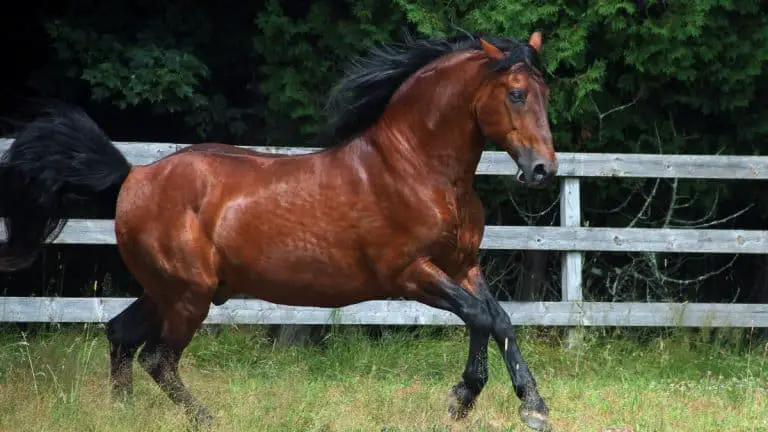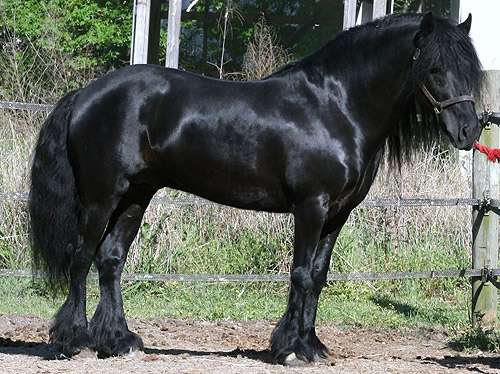
Size
They can reach heights of 1.5 to 1.6 meters.
Color
These horses come in appaloosa, bay, and chestnut hues.
Physical Attributes
Their large heads have straight faces, powerful jaws, and tasteful medium-sized ears. Similar to the majority of other draught breeds, stallions should have thick, arched, and crested necks. These horses have broad hocks, large knees, and powerful legs.
Characteristics and Genetics
The Oberlander horse is a native of the southern German state of Bavaria. The Roman Empire’s warhorses are responsible for the development of this breed. These horses are thought to have descended from Noriker horses from Austria. Bavaria received this breed at the end of the 19th century.
In the year 1769, the main stud farm was established. Here, hefty animals from nearby regions were crossed with the best Bavarian native stock horses. The foundation stock resulted from this marriage. This foundation stock produced the Oberlander breed.
In 1900, this type of interbreeding was abolished. Mixed breeds were not allowed in the studbook. 80 of the Oberlander horses that were discovered in Bavaria are recognised stallions. Private breeders or the Bavarian government are the owners of these. They stand in for the breed’s five different bloodlines. Since 1920, the Oberlander horse breeding industry has been under state supervision in Bavaria.
In 1999, the Oberlander Horse Association was founded. It was started in Canada’s British Columbia. By following the guidelines followed in Bavaria, this organization seeks to direct the breeding of Oberlander horses in North America. With other breeds like the Norman, Hungarian, Clydesdale, Holstein, and Cleveland Bay, they have successfully crossed. The outcome was a draught horse that was quicker and more nimble.
The horses of Oberland are gentle and peaceful animals. They are sociable. Oberlander is sometimes naughty. They have a balanced temperament and a kind demeanor. The health of Oberlander horses must be maintained by regular exercise. They are low-maintenance horses, but they do need some grooming.

What is their lifespan?
Osteochondrosis and osteochondritis dissecans are two conditions that can affect Oberlander horses. Colts are not as negatively impacted as fillies. Horses older than a year old have shown indications of this condition.
What is their speed?
Compared to light horse breeds, these Oberlander horses are sluggish.
Temperament/Personality
Even temperament and a calm demeanor
Ancestor
Roman war horses, Belgian, Clydesdale, Norfolk, Cleveland Bay, Friesian, Norman, Oldenburg are descendants of the Oberlander horse.
Health
These horses are susceptible to several osteological conditions unique to their breed, such as osteochondrosis and osteochondritis dissecans. More instances occur in fillies than colts, especially those that are one year old or older.
Interesting Facts
A total of 2050 heads were counted in the 2013 population report, including 129 stallions and 1921 mares.
Similar to the Noriker horse, this breed is one of the rare equines to have leopard (or “tiger”) spotting.
Out of the four main breeds of German draught horses—the Schleswig Coldblood, the Black Forest Horse, and the Rhenish German Coldblood—this is the only one that has not received an endangered species designation.
Table





